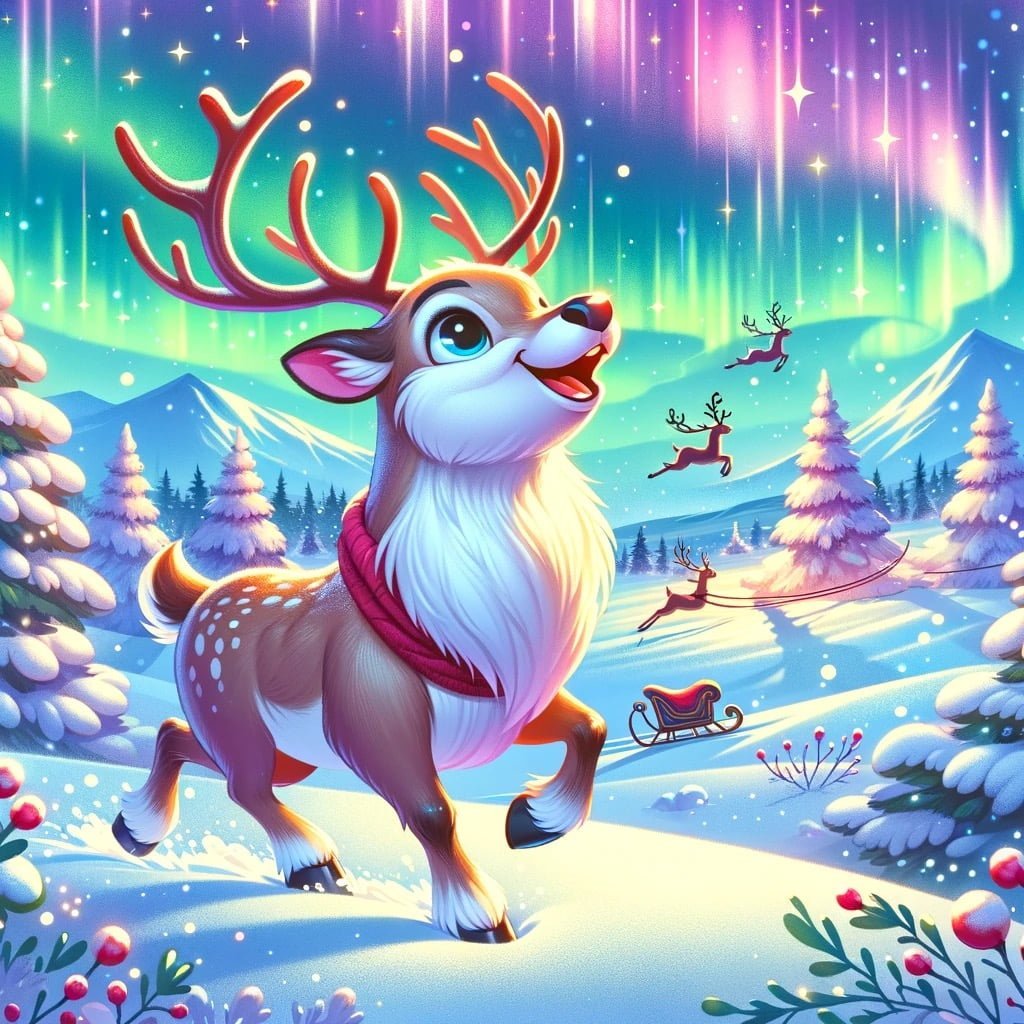Welcome to our blog post filled with fascinating Horse Facts For Kids! From their unique ability to sleep standing up to their incredible sense of smell, horses are truly remarkable creatures. Whether you are a younger kid learning about how baby horses can run shortly after birth or an older kid discovering that horses can communicate through ear movements, there is something for everyone to enjoy in this collection of fun facts. Join us on a journey through the world of horses and uncover the many amazing qualities that make them such special animals. Let’s dive into the world of horses and explore just how extraordinary they truly are!
Horse Facts For Kids
1. Horses Can Sleep Standing Up

For younger kids: Horses can take a quick nap while standing.
For older kids: Horses have a unique ability to doze off while standing due to a “stay apparatus” in their legs that allows them to lock their knees.
Detailed explanation:Horse Facts For Kids: One interesting fact about horses is that they have the ability to sleep standing up. This may seem strange to us humans, as we are accustomed to lying down when we sleep. However, sleeping while standing is a behavior that has evolved in horses as a way to ensure their survival in the wild.
Horses are prey animals, which means they are constantly at risk of being attacked by predators. By sleeping standing up, horses are able to quickly respond to any potential threats. They have the ability to lock their legs in place using a special mechanism called the stay apparatus, which allows them to doze off without collapsing to the ground.
Another reason why horses are able to sleep standing up is due to their unique anatomy. Horses have a system of ligaments and tendons that support their weight while standing, allowing them to relax their muscles and rest without requiring the support of a bed or soft ground.
Furthermore, the way horses sleep standing up allows them to rest while still being able to keep an eye on their surroundings. This heightened awareness is crucial for their survival in the wild, as they need to be able to detect any signs of danger quickly.
In conclusion, the ability of horses to sleep standing up is a fascinating adaptation that has evolved over time to help ensure their safety and survival in their natural environment. So, the next time you see a horse dozing off while standing in a field, remember that it is just another one of their amazing behaviors.
Horse Facts For Kids
2. Horses Have a 360° Field of Vision
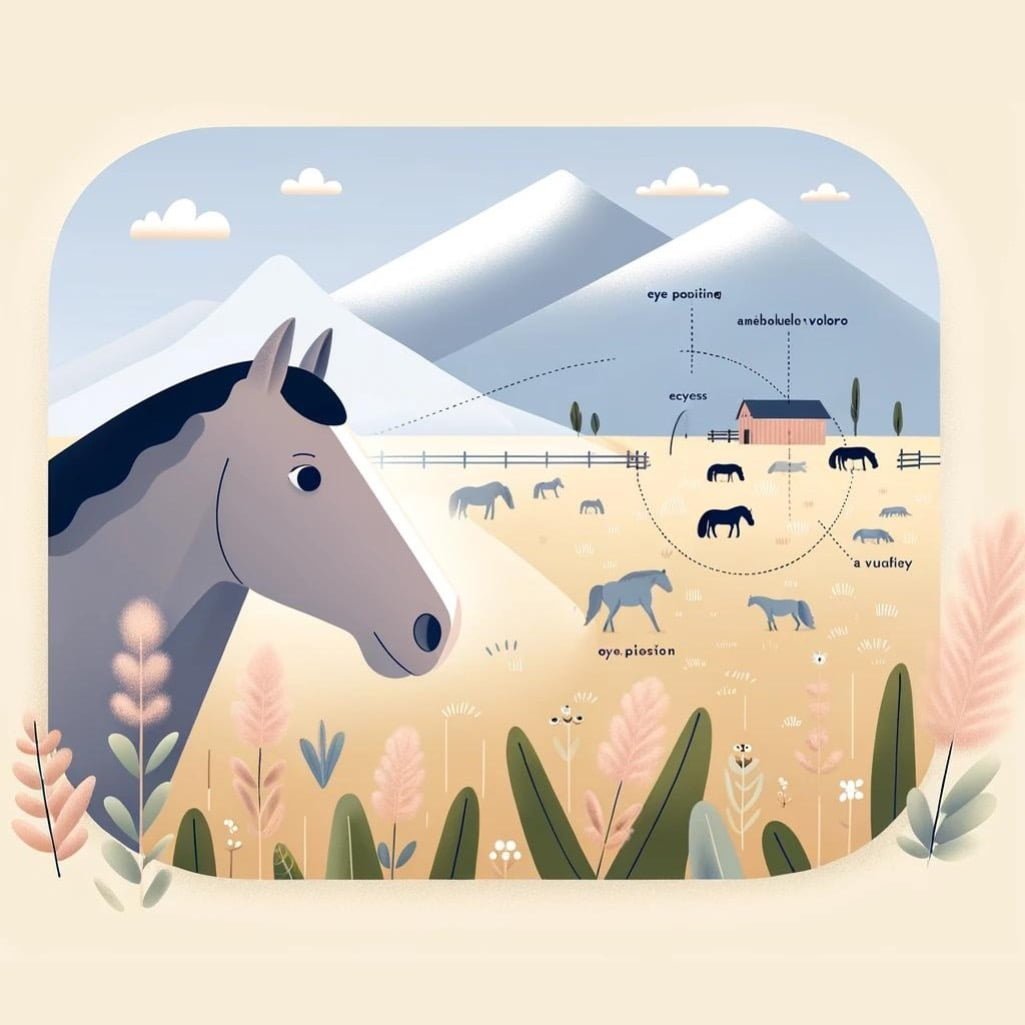
For younger kids: Horses can see almost all around them!
For older kids: With eyes positioned on the sides of their head, horses can see in almost 360 degrees, helping them spot predators quickly in the wild.
Detailed explanation:Horses have a fascinating ability to see almost all the way around their bodies, giving them a remarkable 360° field of vision. This means that they can see in all directions without having to turn their head, which is quite different from humans who have a field of vision of only around 180°.
This incredible field of vision is due to the placement of their eyes on the sides of their heads, rather than in front like humans. This positioning allows horses to have a wide peripheral vision, enabling them to detect predators or other potential threats from any direction. This is a critical survival skill that has been developed over the years of evolution, as horses are prey animals and need to constantly be on the lookout for danger.
Having such a wide field of vision also helps horses to navigate their surroundings more effectively, whether they are grazing in a field or running at high speeds. It allows them to see obstacles or other horses approaching from the side, helping them to avoid collisions and stay safe.
For kids who are interested in horses, understanding this unique aspect of their vision can be both educational and entertaining. It gives them a glimpse into the world of these magnificent animals and helps them appreciate the incredible adaptations that have allowed horses to thrive in their natural habitats. Horse Facts For Kids can be a fun and engaging way to learn about these fascinating creatures and the science behind their amazing abilities.
Horse Facts For Kids
3. Horses Can Run Shortly After Birth

For younger kids: Baby horses can walk and run soon after they are born!
For older kids: Newborn foals have the ability to stand, walk, and even gallop within hours after birth, making them incredibly resilient creatures from the start.
Detailed explanation:One fascinating fact about horses that is sure to captivate the interest of children is that they are able to run shortly after birth. This innate ability is known as precocial behavior, which means that foals are born with the natural instinct and physical capability to move around almost immediately. This remarkable characteristic is crucial for their survival in the wild, as they need to be able to keep up with the herd and evade predators from the moment they are born.
Within a few hours of being born, foals are able to stand on their wobbly legs and start to explore their surroundings. They can trot, canter, and even gallop within a matter of days, showcasing their incredible agility and speed right from the start. This early development of locomotor skills is essential for young horses to be able to follow their mothers, escape danger, and ultimately thrive in their environment.
Observing young foals as they take their first steps and start to run is truly a sight to behold. It is a testament to the remarkable capabilities of these magnificent creatures and a reminder of their wild origins. This fact about horses can spark curiosity and wonder in kids, encouraging them to learn more about these beautiful animals and the many other fascinating aspects of their behavior and biology.
In conclusion, the ability of horses to run shortly after birth is a captivating Horse Fact For Kids that highlights the incredible adaptability and resilience of these creatures from a young age.
Horse Facts For Kids
4. The Fastest Recorded Horse Speed is 55 mph
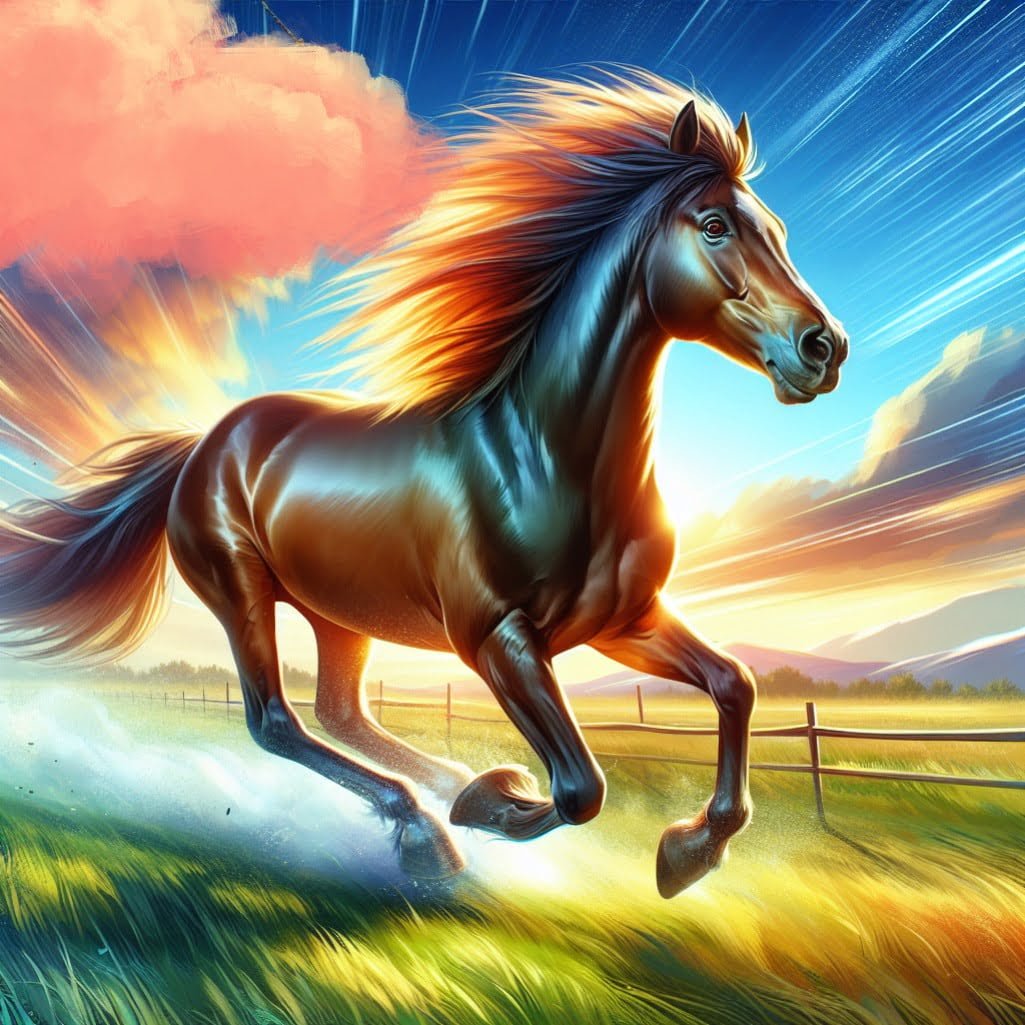
For younger kids: Some horses can run super, super fast!
For older kids: The fastest recorded speed of a horse was clocked at 55 miles per hour, making them one of the speediest land animals on Earth.
Detailed explanation:Horse racing has long been a popular sport around the world, attracting enthusiasts and bettors alike. One of the most impressive aspects of horse racing is the incredible speed that these animals can reach. In fact, the fastest recorded horse speed is a breathtaking 55 mph, demonstrating the remarkable athleticism and power of these majestic creatures.
The ability of horses to reach such incredible speeds is a result of their unique physiology and biomechanics. Equipped with long, powerful legs and a strong cardiovascular system, horses are built for speed. Their muscles are highly developed, allowing them to generate the explosive power needed to gallop at high velocities. Additionally, their large lungs and efficient respiratory system enable them to take in and process large amounts of oxygen, fueling their intense bursts of speed.
While the fastest recorded horse speed is an impressive 55 mph, it is important to note that not all horses are capable of reaching this velocity. Factors such as breed, training, and individual ability can significantly impact a horse’s speed. However, for those horses that do possess the necessary combination of genetics and conditioning, reaching such a high speed is a testament to their natural athleticism and the skill of their trainers and jockeys.
In conclusion, the fastest recorded horse speed of 55 mph is a remarkable feat that showcases the immense physical capabilities of these animals. Whether racing around a track or galloping across open fields, horses never fail to inspire awe with their incredible speed and agility. For kids who are fascinated by horses, learning about these impressive speed records can provide a deeper appreciation for these magnificent animals. Horse Facts For Kids are not only entertaining but also educational, shedding light on the amazing abilities of these beloved creatures.
Horse Facts For Kids
5. Horses Have Excellent Memory
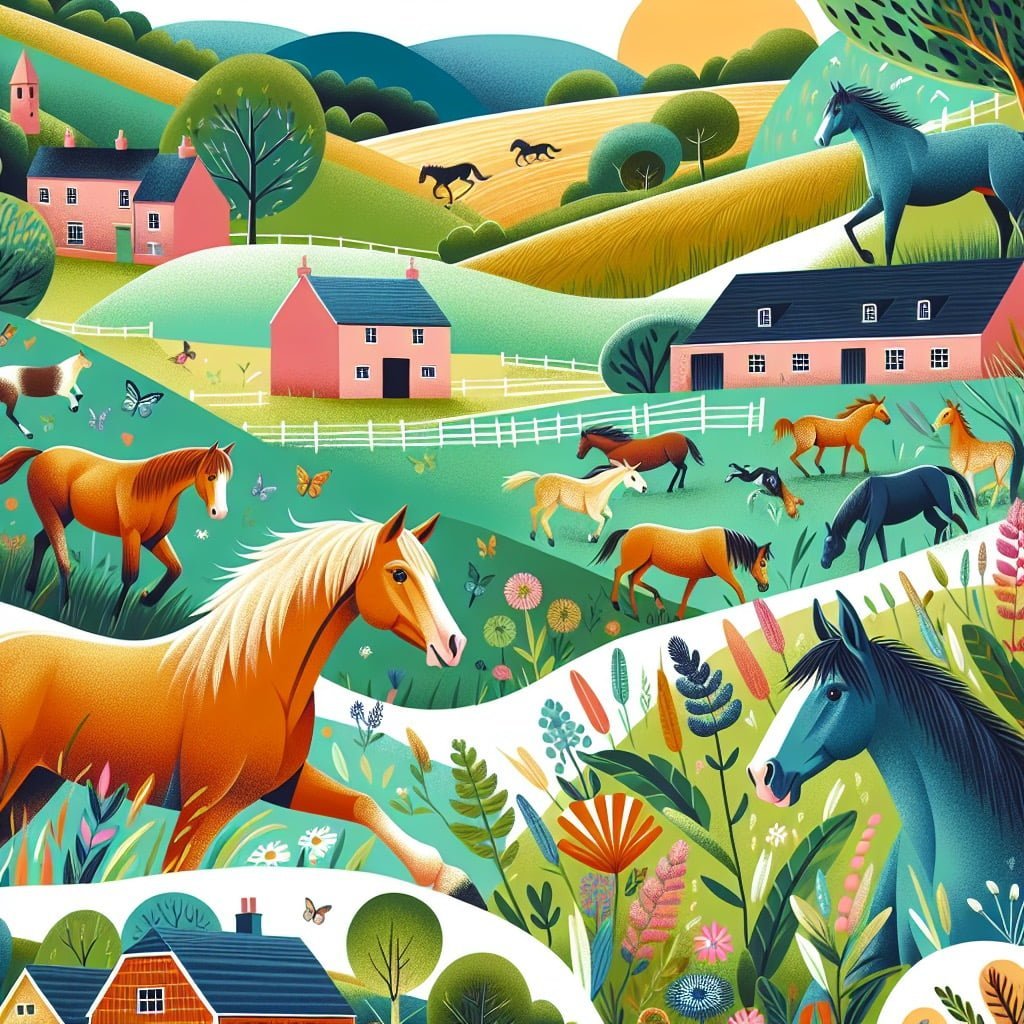
For younger kids: Horses can remember things really well!
For older kids: Horses are known for their remarkable memory, being able to recall places, people, and training even after many years have passed.
Detailed explanation:Horses have excellent memory, which is a well-known fact among equestrian enthusiasts and professionals. This impressive memory capacity is crucial for their survival in the wild, as they need to remember the location of food and water sources, recognize familiar herd members, and recall potential threats for their safety.
One of the most remarkable examples of a horse’s memory is their ability to remember training cues and commands. Once a horse has been taught a certain skill or maneuver, they can retain that information for years to come. This is why horses are often used in therapeutic settings, as they can remember how to respond to different cues and help individuals with physical or emotional challenges.
In addition to training cues, horses also have a keen memory for locations and routes. They can remember trails and paths they have traveled, making them excellent for activities such as trail riding or endurance racing. This memory for locations also helps horses navigate their natural habitats and avoid dangerous areas.
Furthermore, horses have been known to remember human interactions and experiences, both positive and negative. They can recognize individual people and remember past encounters, which can influence their behavior towards them. This is why building a trusting relationship with a horse is so important, as they will remember how they have been treated in the past.
In conclusion, the fact that horses have excellent memory is essential to their survival and their interactions with humans. Their ability to remember training cues, locations, herd members, and past experiences makes them intelligent and intuitive animals, capable of forming strong bonds with their human counterparts. So, when teaching Horse Facts For Kids, it’s important to emphasize the fascinating memory abilities of these magnificent creatures.
Horse Facts For Kids
6. A Horse’s Heart Weighs Around 10 Pounds
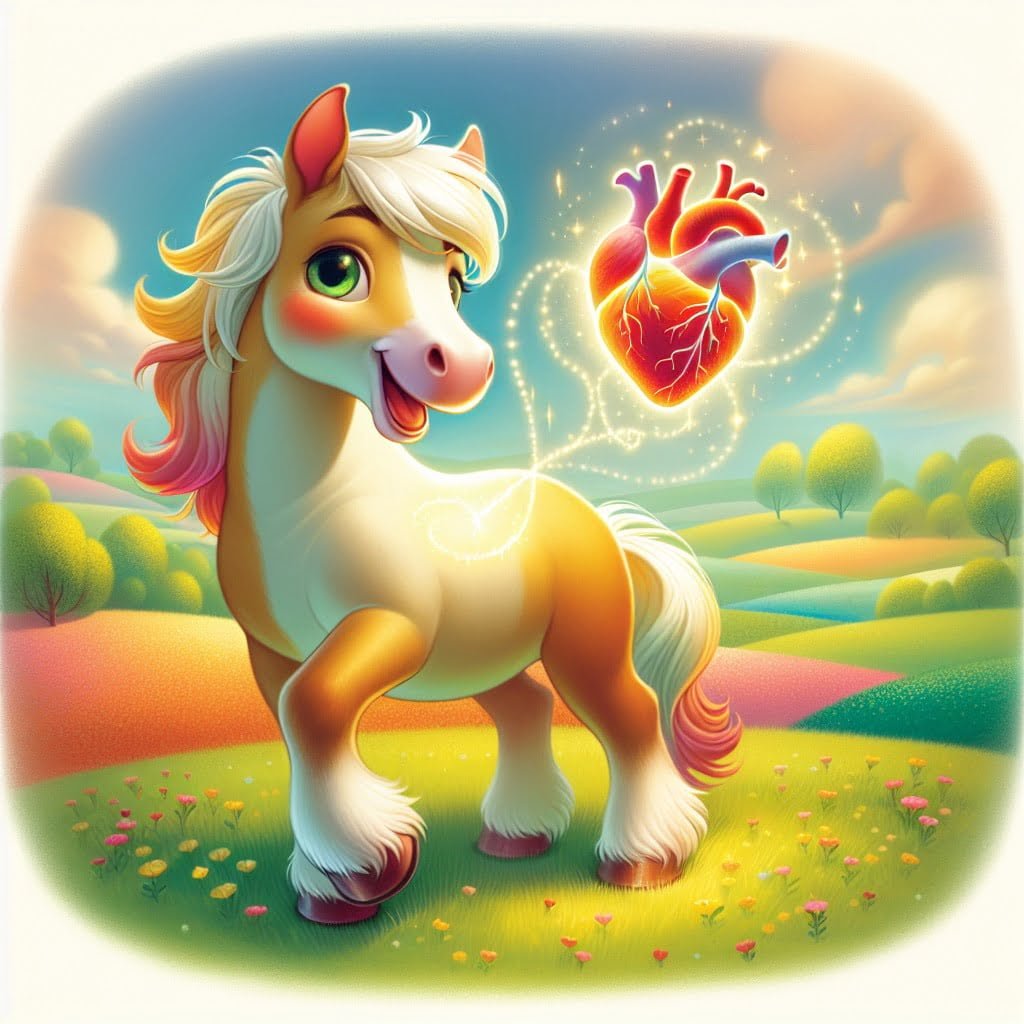
For younger kids: A horse’s heart is pretty big and heavy!
For older kids: The heart of a horse is approximately 10 pounds in weight, making it one of the largest hearts among land animals in terms of relative size.
Detailed explanation:Horse Facts For Kids: Have you ever wondered how much a horse’s heart weighs? Well, here’s an interesting fact for you – a horse’s heart weighs around 10 pounds! This may come as a surprise to many, as the size and strength of a horse can often lead us to believe that their heart must be quite large and heavy.
The average horse weighs anywhere from 900 to 2,200 pounds, depending on the breed and size. With such a large body to support, it is essential for a horse to have a powerful and efficient cardiovascular system. The heart plays a crucial role in pumping oxygen-rich blood throughout the body, providing the necessary nutrients and energy to the muscles and organs.
A horse’s heart is approximately 1% of its total body weight, which is similar to the proportion found in humans. Despite its relatively small size compared to the rest of the body, the horse’s heart is a strong and hardworking organ. It beats at a rate of around 30 to 40 beats per minute at rest, but can increase significantly during exercise or times of stress.
The heart of a horse is a remarkable organ, capable of delivering the necessary oxygen and nutrients to support the impressive strength and endurance of these magnificent animals. So, next time you see a horse galloping freely in a field, remember that its 10-pound heart is working tirelessly to keep it going strong. Horse Facts For Kids can truly be fascinating and awe-inspiring!
Horse Facts For Kids
7. Horses Can Communicate Through Ear Movements
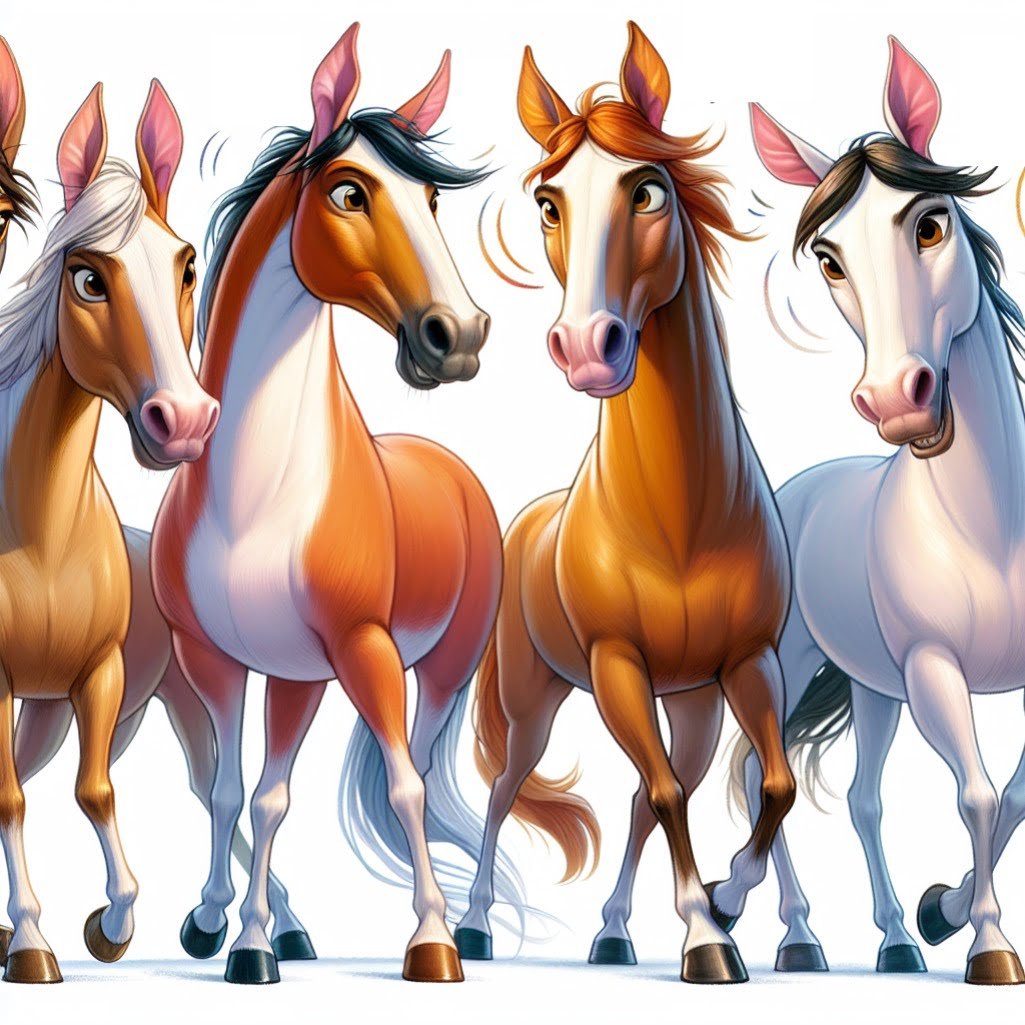
For younger kids: Horses talk with their ears and make funny faces!
For older kids: Horses use their ears to communicate with each other and humans, usually pointing them backward when they are angry or forward when they are alert.
Detailed explanation:Horses are incredibly expressive animals, capable of communicating through a variety of signals and body language. One of the most fascinating ways in which horses communicate is through their ear movements. This is a key aspect of their communication system, especially when interacting with other horses or even humans.
Horses have a remarkable ability to move their ears in different directions, which can convey a wealth of information about their mood and intentions. For example, when a horse pricks its ears forward, it is usually a sign of alertness and curiosity. On the other hand, ears pinned back against the head may indicate aggression or discomfort. By paying attention to these subtle cues, we can better understand what the horse is trying to communicate.
Furthermore, horses can also rotate their ears to focus on specific sounds or objects in their environment. This helps them to better assess potential threats or sources of food. By being attuned to their surroundings in this way, horses are able to respond quickly to changes in their environment and stay safe.
Overall, the ability of horses to communicate through ear movements is a fascinating aspect of their behavior. It is a crucial form of non-verbal communication that allows them to convey their emotions and intentions to those around them. By paying attention to their ear movements, we can better understand and connect with these magnificent animals. Horse Facts For Kids will be surprised to learn how much horses can communicate through their ears.
Horse Facts For Kids
8. The Teeth of a Horse Never Stop Growing
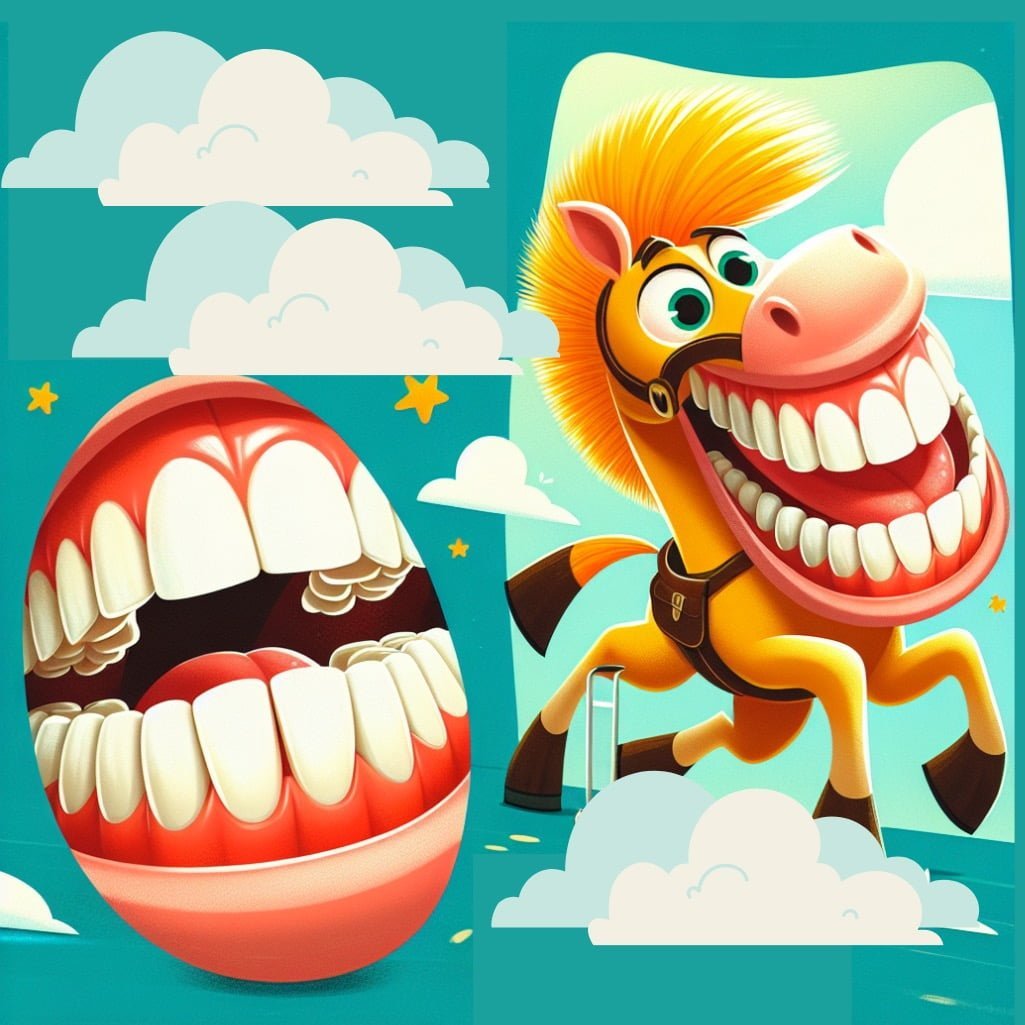
For younger kids: A horse’s teeth keep growing throughout its whole life!
For older kids: Horses have unique teeth that constantly grow to make up for the wear caused by grazing and chewing tough grass and hay.
Detailed explanation:Horse Facts For Kids: One fascinating aspect of horses is that their teeth never stop growing. This may seem strange, but it is actually a crucial adaptation that helps them survive in the wild.
Horses are herbivores, meaning they primarily eat grass and other plant materials. Their diet is tough and fibrous, which puts a lot of wear and tear on their teeth. In order to compensate for this constant grinding action, horses have evolved teeth that continually grow throughout their lifetime.
The teeth of a horse have a unique structure that allows for this continuous growth. They have a reserve crown beneath the gum line that pushes the tooth forward as it wears down. This process ensures that the horse always has enough tooth material to effectively chew its food.
If a horse’s teeth were to stop growing, they would eventually wear down completely, making it difficult for the animal to eat. This would have serious consequences for the horse’s health and survival in the wild.
In captivity, horse owners must be aware of this constant growth and take steps to ensure their horse’s teeth are properly maintained. This often involves regular dental check-ups and filing down of any sharp edges that can develop.
Overall, the fact that a horse’s teeth never stop growing is a remarkable adaptation that highlights the unique biology of these majestic animals. It is just one of many interesting Horse Facts For Kids that can spark curiosity and appreciation for the natural world.
Horse Facts For Kids
9. The Oldest Known Horse Lived to Be 62 Years Old
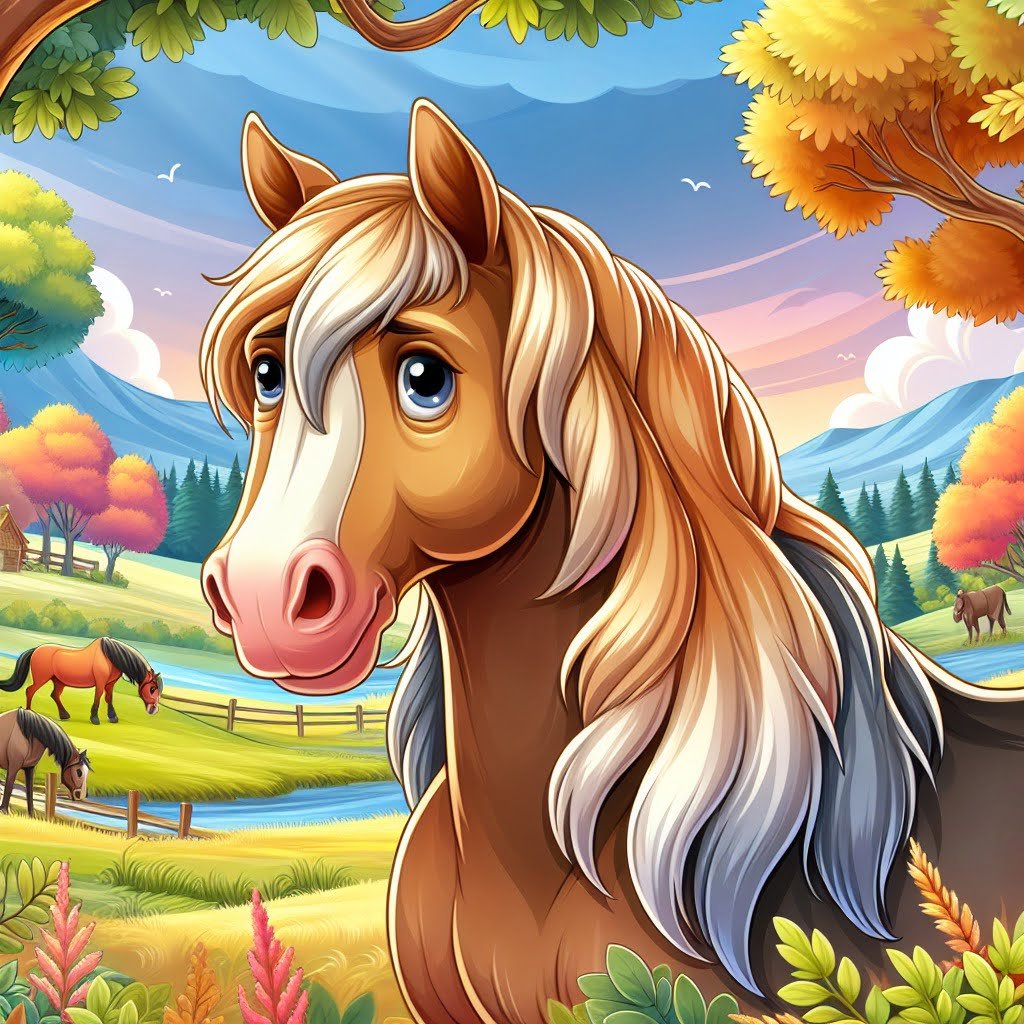
For younger kids: Some horses can live to be very, very old!
For older kids: The oldest recorded horse, named Old Billy, lived an astounding 62 years, proving that with proper care, horses can have long and fulfilling lives.
Detailed explanation:One fascinating Horse Facts For Kids is that the oldest known horse lived to be 62 years old. This remarkable fact showcases the longevity and resilience of these magnificent creatures. Horses are known for their strength and grace, but their ability to live for several decades is truly astounding.
It is important to note that the average lifespan of a horse is typically around 25 to 30 years. However, there have been exceptional cases where horses have surpassed this age and lived well into their 40s or even 50s. The record-breaking horse that lived to be 62 years old serves as a testament to the proper care and attention that can greatly extend a horse’s life.
Several factors contribute to a horse’s longevity, including genetics, diet, exercise, and medical care. Proper nutrition, regular veterinary check-ups, and ample opportunities for exercise and social interaction can all play a role in ensuring that a horse lives a long and healthy life.
As we learn more about horse care and husbandry, we can continue to improve the quality of life for these beloved animals. By providing them with the care and attention they deserve, we can help ensure that horses live long and fulfilling lives. The story of the oldest known horse is a shining example of the bond between humans and horses, and the extraordinary potential for these animals to bring joy and companionship for many years.
Horse Facts For Kids
10. Horses Have an Incredible Sense of Smell
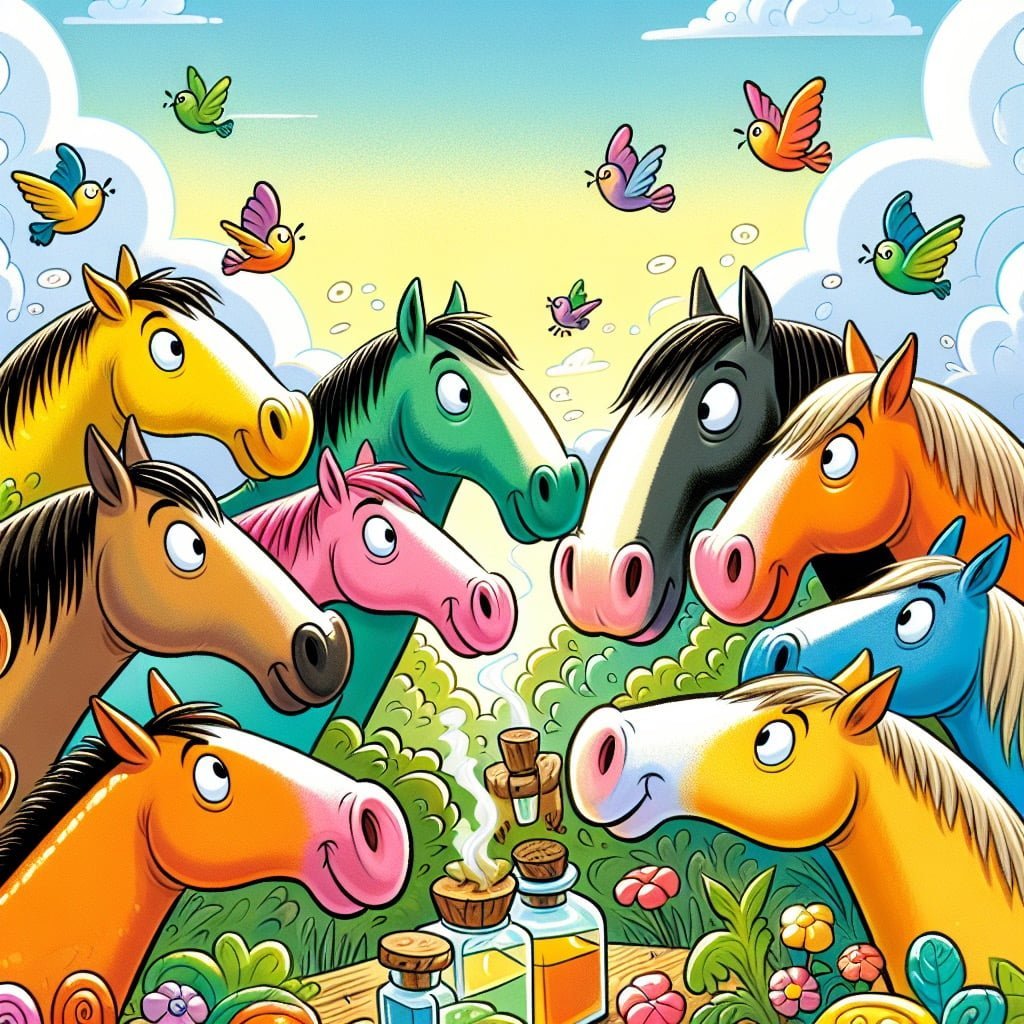
For younger kids: Horses can smell things really far away!
For older kids: Horses have an exceptional sense of smell, being able to detect scents from a distance to alert them of potential dangers or find food sources.
Detailed explanation:Horses, as majestic creatures, possess an incredible sense of smell that plays a crucial role in their survival and daily activities. This sense of smell, known as olfaction, is highly developed in horses and is essential for detecting danger, finding food, and recognizing other horses. Research has shown that horses have up to 50 million olfactory receptors in their noses, compared to around 5 million in humans. This abundance of receptors allows horses to pick up on a wide range of scents with remarkable sensitivity.
One fascinating aspect of a horse’s sense of smell is its ability to remember and distinguish between different odors. Studies have shown that horses can remember particular scents long after being exposed to them, allowing them to associate different smells with specific experiences or individuals. This skill is particularly useful in the wild, where a horse’s survival may depend on its ability to identify predators or locate sources of food based on scent cues.
In addition to their natural ability to detect scents, horses also use their sense of smell to communicate with other horses. They can use scent marking to establish territory, communicate reproductive status, and identify other members of their herd. By sniffing and investigating smells in their environment, horses can gather valuable information about their surroundings and the animals they share them with.
Overall, the incredible sense of smell that horses possess is a vital part of their sensory capabilities that contribute to their survival, communication, and interactions with the world around them. It is truly a remarkable aspect of these beloved animals that never ceases to amaze those who study them.
Did you know?
Did you know that a group of horses is called a “herd”?
Summary of Horse Facts For Kids
If you’re looking for fun and fascinating facts about horses to share with your kids, look no further! This blog post is packed with 10 amazing tidbits that are sure to capture the imagination of young animal enthusiasts. From the surprisingly versatile sleeping habits of horses to their impressive memory capabilities, each fact offers a peek into the unique world of these majestic creatures. Whether your children are curious about how fast horses can run or how they communicate with each other, this blog post has something for everyone. So, if you want to learn more about these incredible animals and spark your kids’ interest in the natural world, dive into this exciting collection of Horse Facts For Kids.
Sources and additional information for Horse Facts For Kids
WikipediaBritannicaSan Diego Zoo KidsThe Smithsonian InstitutionDK Find Out!Australian MuseumWorld Wildlife FundThe Nature ConservancyAnimal PlanetMonterey Bay AquariumPBS NatureSmithsonian’s National Zoo & Conservation Biology InstituteWorld Wildlife FundAnimal Diversity Web (University of Michigan)IUCN Red List of Threatened SpeciesThe Cornell Lab of Ornithology – All About BirdsNational Audubon SocietyEncyclopedia of LifeSeaWorld Parks & EntertainmentAustralian Museum – AnimalsEncyclopedia of Life

